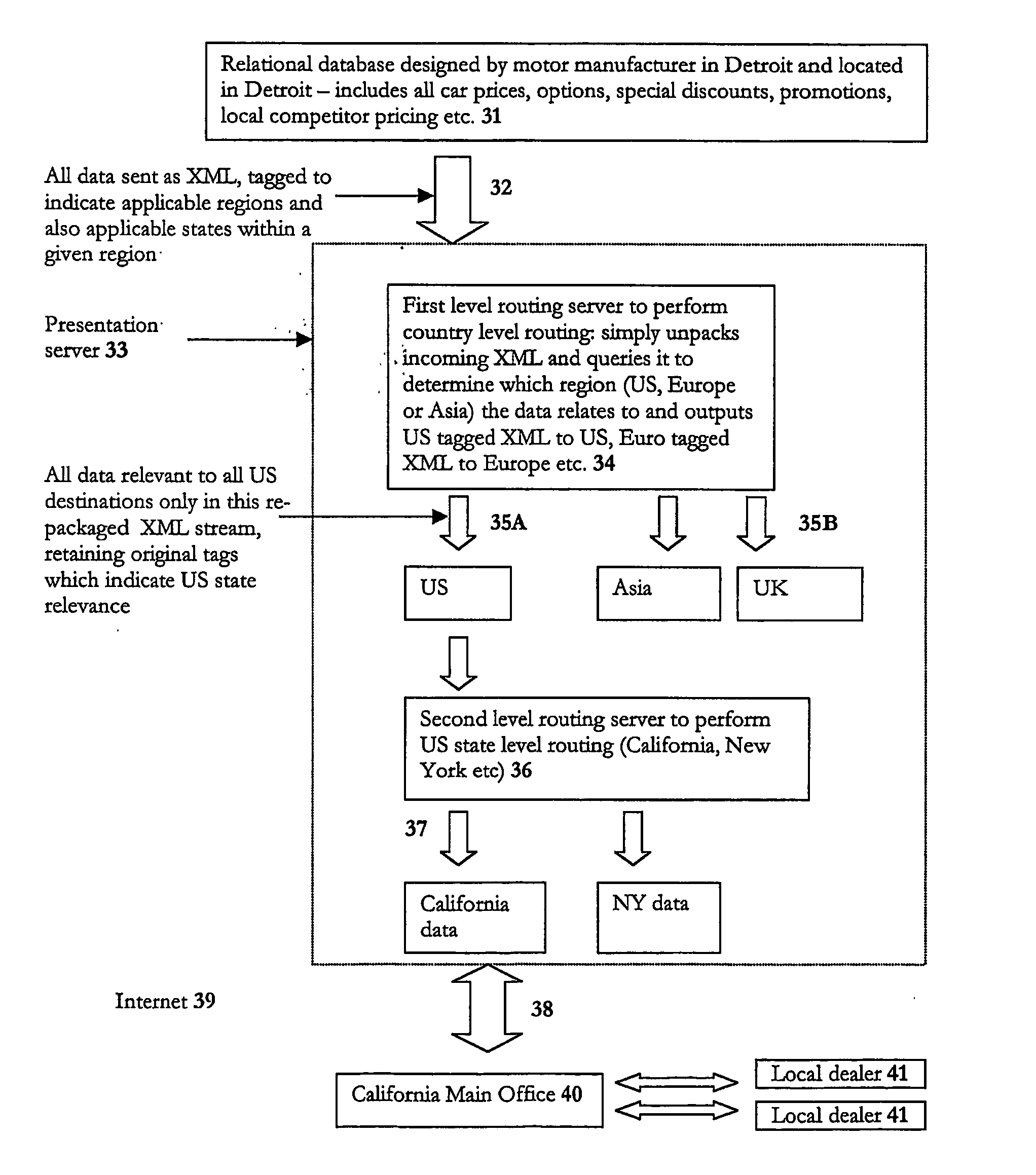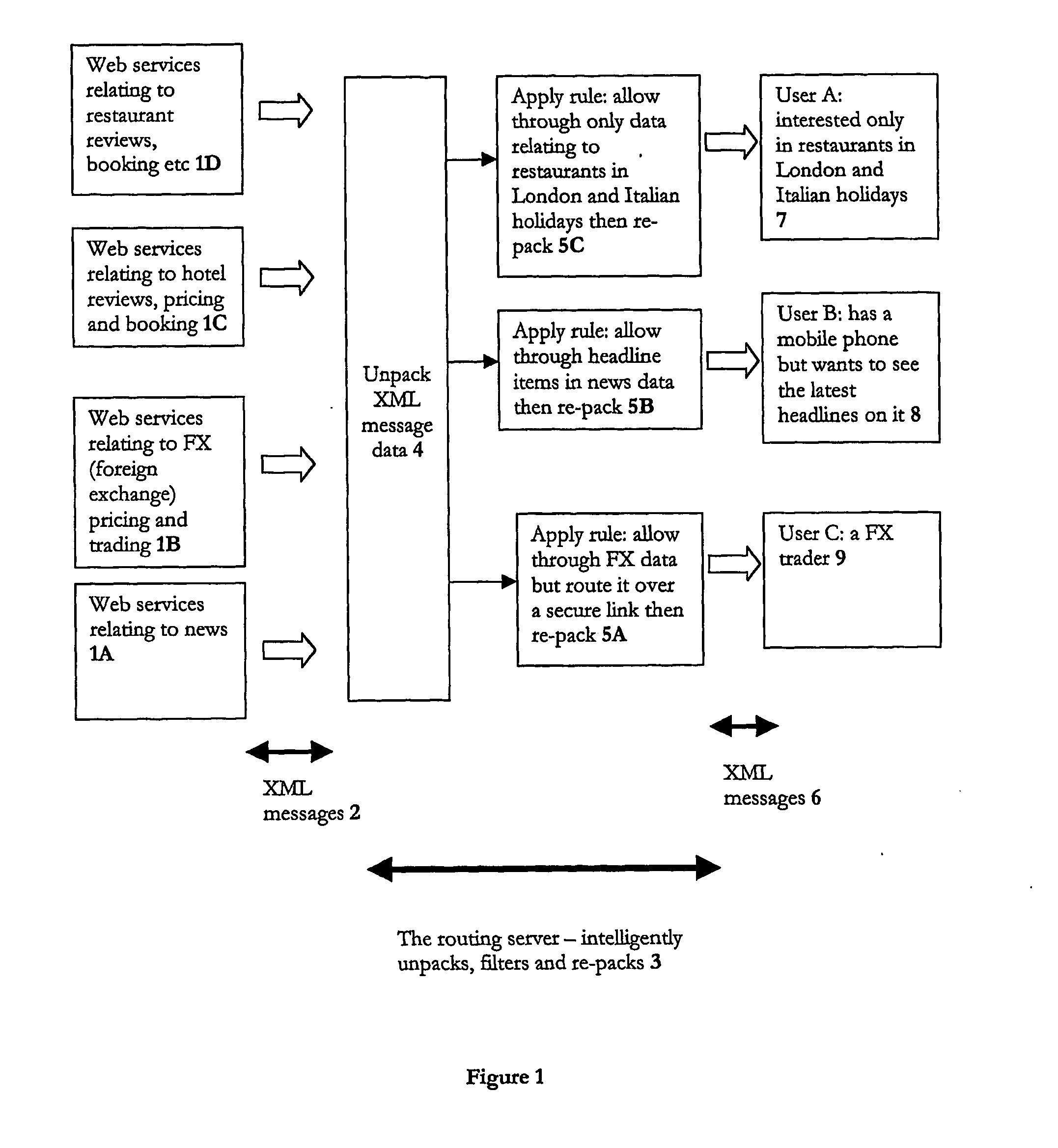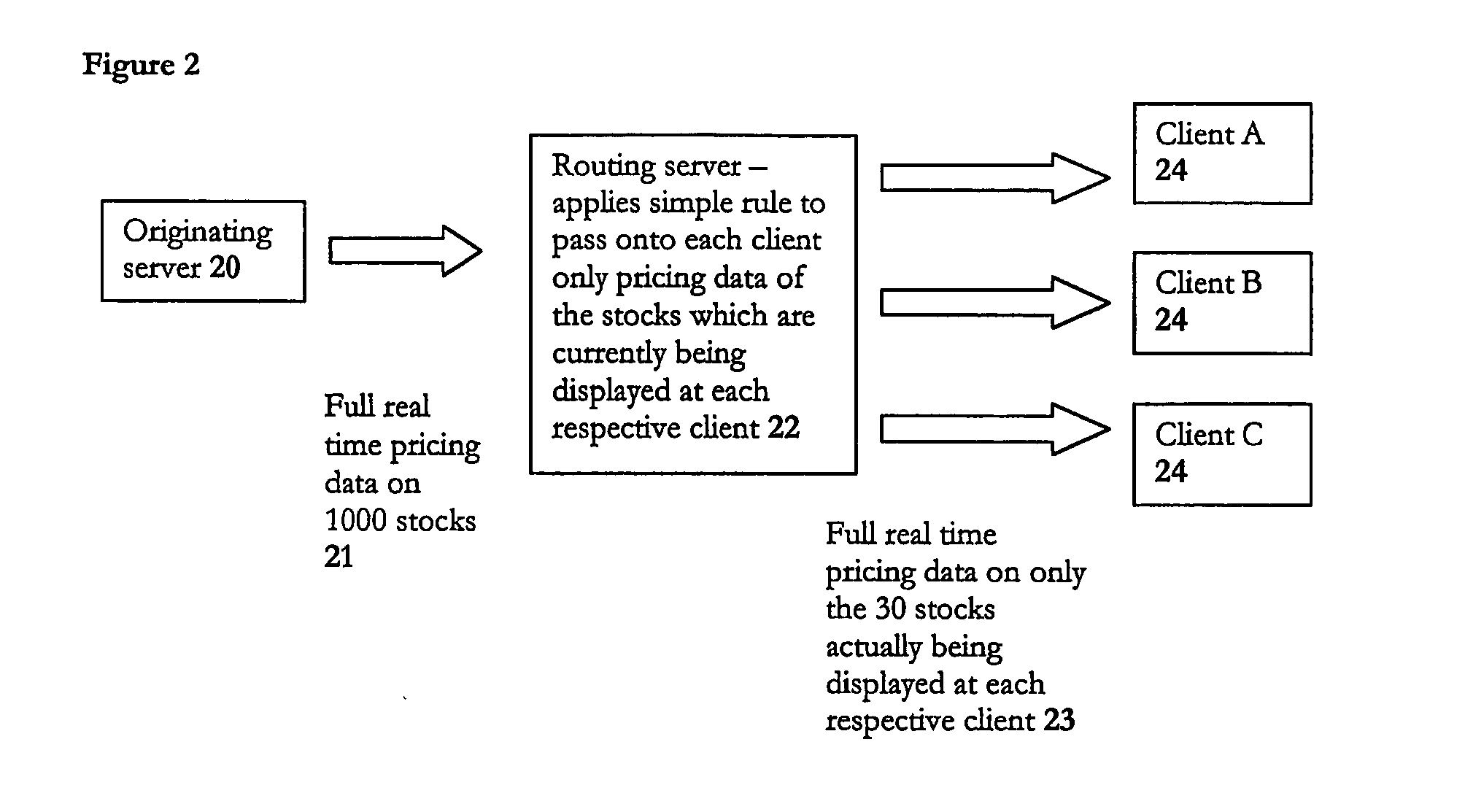Data routing
a data routing and data technology, applied in the field of data routing, can solve the problems of loss of the quality of the resulting sound or image, the loss of data cache ever increasing (and potentially huge) amounts, and the inability to reliably and accurately determine the quality of the resultant sound or imag
- Summary
- Abstract
- Description
- Claims
- Application Information
AI Technical Summary
Problems solved by technology
Method used
Image
Examples
Embodiment Construction
[0028] The present invention will be described with reference to an implementation from Altio Limited of London, UK, called the Presentation Server. The Presentation Server provides the routing functionality described in the preceding sections. To re-cap on the fundamentals, the prior art approach is for messages to include an address header and for an incoming message to be routed as a unitary block, not to be analysed in any way, other than for its address to be read and used in the routing operation. The present invention challenges this orthodoxy by requiring that the data content of messages be unpacked and be subject to rule based filtering in order to achieve routing, with outgoing re-packaged messages comprising data from any combination of the whole or part of one or more incoming messages (e.g. the sub-set(s) of the data of one or more incoming messages, the entirety of one or more incoming messages, the sub-set(s) of some messages and the entirety of others etc.etc.).
[00...
PUM
 Login to View More
Login to View More Abstract
Description
Claims
Application Information
 Login to View More
Login to View More - R&D
- Intellectual Property
- Life Sciences
- Materials
- Tech Scout
- Unparalleled Data Quality
- Higher Quality Content
- 60% Fewer Hallucinations
Browse by: Latest US Patents, China's latest patents, Technical Efficacy Thesaurus, Application Domain, Technology Topic, Popular Technical Reports.
© 2025 PatSnap. All rights reserved.Legal|Privacy policy|Modern Slavery Act Transparency Statement|Sitemap|About US| Contact US: help@patsnap.com



